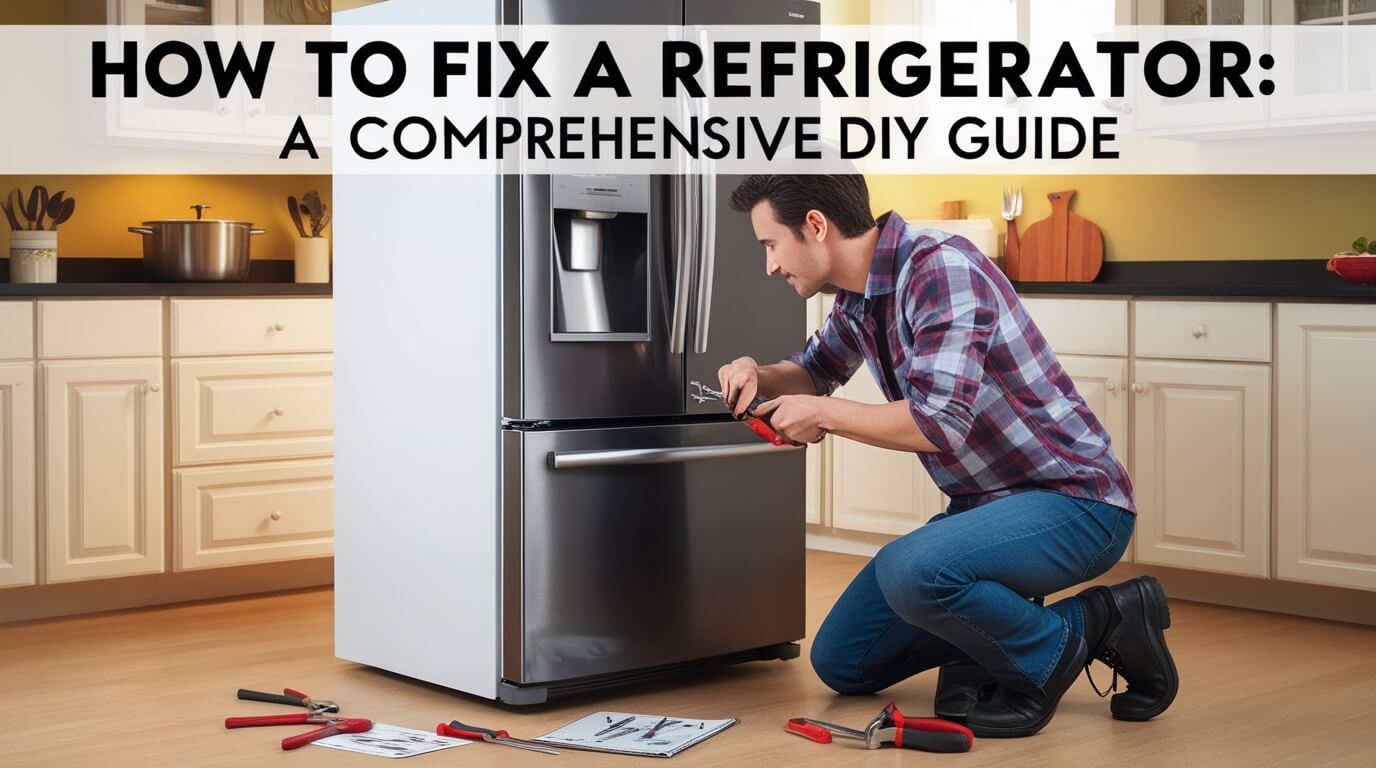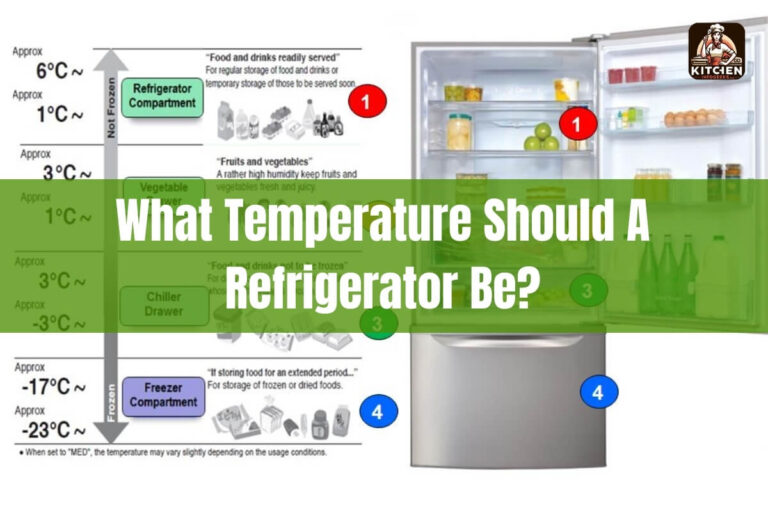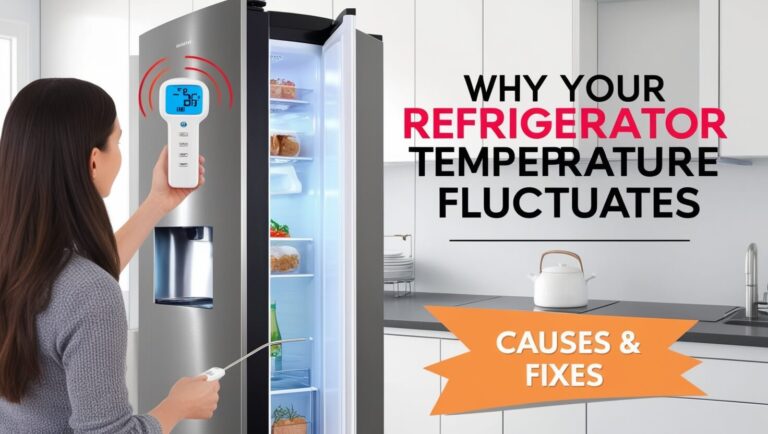
Is your fridge on the fritz? Don’t fret! You can often fix common issues yourself. This guide helps you spot problems, make repairs, and keep your fridge in top shape. Save time and money by learning how to handle fridge troubles that could spoil food and hike up your power bills.
Common Refrigerator Components
Before we start fixing, it’s crucial to know what makes your fridge tick.
Your refrigerator has several key parts:
- Compressor
- Condenser coils
- Evaporator
- Thermostat
- Fans
- Defrost system
Each component plays a vital role in keeping your food cold and fresh.
How a Refrigerator Works
Refrigerators use a cooling cycle to remove heat from inside the fridge and release it outside. The compressor pumps refrigerant through the system, which absorbs heat and cools the interior.
Signs Your Refrigerator Needs Repair
Catching problems early can prevent bigger headaches down the road. Here are some red flags to watch for:
Temperature Issues
- Food spoiling quickly
- Fridge or freezer not cold enough
- Freezer too cold, but fridge warm
Strange Noises
- Buzzing
- Clicking
- Rattling
Water Leaks
- Puddles on the floor
- Water inside the fridge
Ice Maker Problems
- No ice production
- Small or misshapen ice cubes
If you notice any of these signs, it’s time to put on your DIY hat and get to work.
Tools You’ll Need for Refrigerator Repair
Before you start, gather these tools:
- Screwdrivers (flathead and Phillips)
- Multimeter
- Pliers
- Adjustable wrench
- Cleaning brushes
- Vacuum cleaner with attachments
Having the right tools on hand makes refrigerator repair much easier.
Safety Precautions Before Fixing Your Refrigerator
Safety first! Follow these steps before you begin:
- Unplug the refrigerator
- Turn off the water supply (for models with water dispensers or ice makers)
- Remove food and store it properly
- Wear gloves to protect your hands
Never skip these safety measures – they could save you from injury or electrical shock.
Troubleshooting Common Refrigerator Problems
Now, let’s tackle some frequent fridge issues and how to fix them.
Refrigerator Not Cooling
If your fridge isn’t staying cold, try these steps:
- Check the thermostat settings
- Ensure nothing is blocking the vents
- Clean the condenser coils
- Test the door seals
Often, a simple adjustment or cleaning can solve cooling problems.
Freezer Not Cold Enough
When your ice cream turns to soup, try this:
- Clear any frost buildup
- Check for overpacking
- Ensure the freezer door seals properly
- Test the defrost system
A properly functioning freezer should maintain a temperature of 0°F (-18°C).
Excessive Frost Buildup
Too much frost can signal several issues:
- Faulty door gasket
- Defrost system malfunction
- Damaged door seal
Addressing these problems can prevent frost and improve efficiency.
Water Leaking on the Floor
Don’t slip up when dealing with leaks:
- Check the defrost drain for clogs
- Ensure the fridge is level
- Inspect water supply lines for leaks
- Clean the drain pan
A dry floor is a happy floor – and a sign of a well-functioning fridge.
Ice Maker Not Working
No ice for your drinks? Try these fixes:
- Check the water supply
- Clear any ice jams
- Test the water inlet valve
- Inspect the ice maker assembly
With these steps, you’ll be back to chilling your beverages in no time.
Step-by-Step Refrigerator Repair Guide
Let’s get our hands dirty with some common repairs.
Cleaning Condenser Coils
Dirty coils can cause poor cooling. Here’s how to clean them:
- Locate the coils (usually behind the kick plate or back of the fridge)
- Unplug the refrigerator
- Use a coil brush or vacuum attachment to remove dust and debris
- Wipe down the area with a damp cloth
Clean coils can improve efficiency and extend your fridge’s life.
Replacing the Door Gasket
A worn gasket lets cold air escape. Replace it like this:
- Remove the old gasket by pulling it out of its track
- Clean the gasket channel thoroughly
- Install the new gasket, starting at the top corner
- Press it firmly into place all around the door
A tight seal keeps the cold in and your energy bills down.
Fixing a Faulty Thermostat
When the thermostat goes haywire, follow these steps:
- Locate the thermostat (usually inside the fridge)
- Test it with a multimeter for continuity
- If faulty, remove the old thermostat
- Install the new one, connecting the wires properly
A working thermostat ensures your fridge maintains the right temperature.
Repairing the Defrost System
A malfunctioning defrost system can cause frost buildup. Here’s how to fix it:
- Unplug the fridge and remove the freezer’s back panel
- Check the defrost heater, thermostat, and timer
- Test each component with a multimeter
- Replace any faulty parts
A properly working defrost system keeps frost at bay and your fridge running smoothly.
Addressing Compressor Issues
Compressor problems can be tricky. If you suspect a faulty compressor:
- Listen for unusual noises
- Check if the compressor is hot to the touch
- Test the compressor with a multimeter
- If faulty, consider professional help – compressor replacement is complex
Remember, some compressor issues might require expert assistance.
When to Call a Professional Refrigerator Repair Service
While DIY repairs can save money, some issues need a pro. Call an expert if:
- You’re not comfortable working with electricity
- The problem persists after your repairs
- Your fridge is under warranty
- You need to replace major components like the compressor
Sometimes, professional help is the safest and most cost-effective choice.
Maintenance Tips to Prevent Future Refrigerator Problems
An ounce of prevention is worth a pound of cure. Try these maintenance tips:
- Clean the coils regularly (every 6 months)
- Check and clean door seals monthly
- Keep the fridge and freezer at the right temperature
- Avoid overpacking – allow air to circulate
- Defrost manually if needed
Regular maintenance can prevent many common refrigerator problems.
Cost Comparison: Repairing vs. Replacing Your Refrigerator
Deciding whether to repair or replace your fridge? Consider these factors:
- Age of the refrigerator (over 10 years old? Replacement might be better)
- Cost of repairs vs. new fridge price
- Energy efficiency of your current model
- Frequency of breakdowns
Sometimes, investing in a new, energy-efficient model can save money in the long run.
Frequently Asked Questions About Refrigerator Repair
Let’s address some common questions:
How often should I clean my refrigerator’s coils?
Every 6 months, or more often if you have pets.
Why is my refrigerator running constantly?
It could be due to dirty coils, a faulty thermostat, or a damaged door seal.
Can I use a regular vacuum to clean refrigerator coils?
Yes, but a brush attachment works best.
How long should a refrigerator last?
On average, 10-15 years with proper maintenance.
Is it normal for my fridge to make noise?
Some noise is normal, but loud or unusual sounds may indicate a problem.
Mastering the Art of Refrigerator Repair
Learning how to fix a refrigerator can save you time, money, and hassle. With this guide, you’re now equipped to tackle many common fridge problems. Remember to prioritize safety, know your limits, and don’t hesitate to call a professional when needed.
Regular maintenance and prompt attention to issues can keep your refrigerator running efficiently for years to come. So, the next time your fridge acts up, roll up your sleeves and put your new skills to work. Your wallet (and your perfectly chilled beverages) will thank you!






